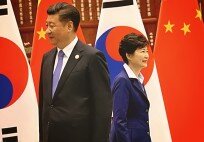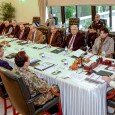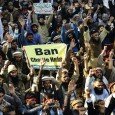By Noorilhuda –
Sustaining a monthly or weekly in the mad, mad world of 24-hour television, newspapers and online media is not for the faint hearted
The world’s first magazine originated in early eighteenth century in England with the title The Gentleman’s Magazine: Or, Monthly Intelligencer. This was the first time that the Arabic word machsan (meaning ‘storehouse of knowledge, treasure’) as used in French was taken as a title.
It was also the first to contain varied topics in a single publication, instead of exclusive journals of science or surgery. It usually started off like most monthlies do even today — with letters from readers entitled Minor Correspondence. Here’s one example:
“We have received a Note from Messrs. J. G. and L. A. B. remarking that in the review in our last Magazine of works on Monumental Breases, it was stated that in the revivals of Pugin and Messrs. Waller ancient examples had been principally copied. To which they reply ‘This is not so in either case. Many that we have executed are quite unlike any old examples, but it has often happened that we have been instructed to copy or imitate certain well-known examples, but in no case has a servile copy been made’.”
Apparently, people felt old stuff was being rehashed, if not plagiarized entirely even then! The four-page English-language monthly contained everything from the world of news and analysis. Interestingly, the politics of Queen Elizabeth, her ministers, traitors and patriots, foreign affairs, battle reports, prostitutes, witchcraft, prices of goods and grains, law and surgery, poetry, marriages, christenings, obituaries as well as reviews of books, museums and weather were done.
As its first printer, editor and publisher Edward Cave wrote ‘And whatever is worth quoting from the Numerous Papers of News and Entertainment, British and Foreign; or shall be communicated proper for Publication.’
It was the first of its kind, not just in content and title but also the range of its publication — it was read beyond the U.K., in most of Europe. It was also cheap and considered a bargain. It ran for two centuries years before ceasing publication in early into the 19th century. Its closure had nothing to do with the advent of TV or Internet, since none existed in 1907, but perhaps more of a sign of the times, competition or cost.
According to Mag Forum, today 8,000 titles are published from Britain alone catering to all sorts of areas of public interest.
Just like it is difficult to compare the readership or sales of say, American publication People Magazine with that of The New Yorker or Reader’s Digest, similarly, in Pakistan it would be unfair to compare Herald, the leading current affairs English monthly, with Akhbar-e-Jahan, the leading general interest Urdu weekly, or any of the two with the wildly popular Khawateen Digest or suspense titles.
Nawa-i-Waqt’s Friday magazine may have a readership in Lahore/ Punjab, but Ummat’s publication Taqbeer has a following in Karachi/Sindh. Daily Timesnewspaper’s weekend offering Sunday is a rage because of all the social get-togethers it covers — something that other weeklies have copied to increase their sales. All have their own niche audience and each has a playing field.
It is hard to figure out the exact circulation figures of any daily, weekly or monthly in Pakistan. “It is closely guarded, because of powerful groups, like APNS and newspaper owners,” says a source from Ministry of Information.
“We cannot give the figures to the parliament or even Supreme Court, even if they ask for it.” What the ministry can give however, is also subject to speculation. “Any figure given by Audit Bureau of Circulation or the Ministry has to be taken with a pinch of salt,” says Ismail Khan, Dawn’s Peshawar editor.
“Many fictitious papers and names are seen in such lists, who are only there because people want the government adverts, which is not possible without ABC certification and even the ministry officials take a commission on the registration and a cut from number of adverts given to a fictitious paper. The best way to find out actual circulation of anything is from public-sector private advertising agencies,” Khan says.
In 2003, PEMRA approved licences for 4 private satellite channels (the number increased to a whopping 89 by 2013), while 900 companies were given cable TV licenses in 2003 (which mushroomed to 3500 by year 2013). According to the PEMRA website, following kinds of channels are licensed and most of these are on-air in Pakistan right now:
Category – Channels for Landing Rights – Satellite TV
Regional Language 0 – 19
News & Current Affairs 5 – 22
Health 0 – 1
Entertainment 16 – 38
Agriculture 0 – 1
Sports 4 – 4
Education 1 – 4
Total 26 – 89
(Note: Channels given landing rights are foreign channels such as HBO, Discovery, Cartoon Network, CNN, Star Sports and URDU1. Satellite TV channels are local/Pakistani channels such as CNBC, GEO Super, ARY Digital, City-42, Masala TV, Virtual University, Express Music, Health Channel, Filmazia, Business Plus)
This raises the bar for any sort of publication — why would anyone read a paper or magazine when they have been inundated by ‘breaking news’ (noted as Barking News by Shehzad Roy in one of his angsty music videos), in fact the very idea that newspapers give details of yesterday’s news (politics, crime, accidents, deaths with a light sprinkling of ‘Bollywood news’) and magazines lay out analyses of the biggest stories of the month gone by, which has already been done to death by the 24-hour news cycle, investing in buying and reading an English-language monthly requires a certain kind of commitment which may not be what the magazines enjoyed ten years ago.
To get to the bottom of it all, Pique interviewed editors of major English monthlies and weeklies.
Badar Alam, Editor, Herald
A twenty-year veteran in the field of journalism, Alam has been editor since June 2010 at the current affairs magazine that boasts of circulation in North America, U.K. and Middle East. “There seems to be no major loss in magazine readership considering that no major magazine has closed down so far and the revenue earnings for most of them have remained more or less stable”, he says.
“In fact, the arrival of new titles like Pique suggests that the situation is not bad for magazines,” but he agrees that magazine journalism has changed.
“Yes, it has, mostly in terms of layout designs and editorial content. Different magazines have different audiences — like Libas and She would not have the same readers as the Herald or The Friday Times. And less than two-percent of Pakistanis understand English well. Each one of (the magazines) is responding differently to the challenges being posed by the newspapers, television and online media. There has been a shift in editorial approaches.”
He lays out the usual mode of fleshing out stories. “A routine editorial meeting atHerald takes place in the first week of a month; plans are discussed for the coming issue in a democratic manner and updates are given and provided on ongoing editorial projects.”
He believes that magazines have always been trendsetters.
“I’ll give you one example: The entire election coverage in Pakistan even now is modeled on Herald’s 1988 election issue, but there is a difference between breaking a news report and investigating it thoroughly. Magazines might have broken some news in the past but now this has been taken over by TV totally and online media but in-depth investigative reporting still remains the magazines’ staple ingredient.
“Magazines need to redefine their editorial approach to find out what best they should and can cover in the age of television and Internet. Maybe less reviews but possibly long and more detailed, analytical ones. There is no ideal module.”
Ironically, he recounts a Herald story on appointments in FIA (Federal Influentials’ Agency by Ghulam Dastageer, Nov. 2012) that was taken up by a cable TV channel — Dunya TV — which ran it without giving credit to the magazine.
“We talk a lot of journalistic ethics but reality is different. Recently Herald did a survey (Political Barometer, April 2013) that had six months of hard work behind it, and all the TV channels ran it, without actually naming the source or group,” he says.
He considers Newsline, The Friday Times and The News on Sunday good current affairs magazines. “The magazines are moving more into analysis than reporting; data-based analytical journalism and long form (narrative/ immersion) reporting techniques are also being explored,” he says.
Rehana Hakim, Editor, Newsline
A veteran of all kinds of publishing seasons, Rehana has been editor-in-chief ofNewsline for the last 19 years. Before that she worked in Herald for a decade.
“Keeping a magazine alive that is run by journalists, with no backing from any big publishing house, in times of an economic downturn and in the presence of 60-plus TV channels and a very vibrant social media poses a huge, huge challenge,” says Rehana. “Newsline has battled it all for 24 years, but things are getting difficult. The main challenge is financial,” she asserts.
She has also noticed a shift in the stories covered. “We have done a lot of investigative work in the past. But now you have 60 channels beaming live for 24 hours. They are the ones who are mostly breaking the stories and they are the ones sources prefer to talk to generally — and understandably so, for, it has greater impact. Why, even the ministers, advisers and whoever is looking for their five minutes of fame prefer the electronic media and the print media is given the short shrift.”
Rehana feels that the field of magazine publication has grown but in a certain direction.
“The number of lifestyle and fashion magazines is burgeoning and they are getting glossier and bulkier. And, needless to say, advertisers are more inclined to pay them with ads rather than newsmagazines. I’ve seen around 90 ads in a women’s magazine this month (April). And I see around 60-70 ads in the weekend edition of a daily which features beautiful people every week. So, I understand why everyone wants to bring out a fashion or lifestyle magazine.”
But still she believes very strongly that there is no substitute for a good magazine. “Often at social gatherings, I’m accosted by people who tell me they’ve stopped watching the news shows because they are sick of battling anchors and politicians. As far as magazines go, the analysis is more detailed, in-depth and not agenda-driven and sensationalist.”
Rehana says even though elections will be held on 11th May — well after the magazine hits the floor — there is no need to re-think strategy for content.
“I don’t agree that the stories will be redundant post-polls. A lot of the analyses, predictions, coverage of polls etc are like your ‘data bank’ or a ‘chapter from your election history’ — relevant for all times to come. This focus on research-based material is where every current affairs magazine derives its strength from.”
She likes Newsline, The Friday Times, Herald and The News on Sunday and Libas(in that order). “Often, certain channels ask for copies of Newsline issues five to ten years old. I guess they either pick up story ideas or use them as resource material!”
She says there is an upward trend with Newsline having a good Internet presence and more readers on it now than before. “It plays a key role in that it has added a totally new set of young readers, who are very active on the social media. And they are clued in.”
Unlike everyone else who was interviewed for the piece, Rehana believes that the people reading an English-language current affairs magazine should not be classified as urban or researcher or upper class.
Newsweek International went digital in 2012 though in Pakistan it is still running in paper format. Rehana does not think that publication is a dying form of expression. “So long as there are old-fashioned dinosaurs like me, who like to have a hard copy of their favourite publication, and so long as the advertisers continue to prefer the print media to online publications, the print edition will remain.”
Raza Rumi, Editor, The Friday Times
Rumi, now seen frequently at both PTV and Capital TV as an analyst, has been in the field of journalism for eight years. He has been editor at the Punjab caretaker-CM Najam Sethi’s weekly for the last five years.
“Nothing is as exciting as when a story breaks, or you realize that there’s a specific way you’re approaching a current issue and that that approach needs to be properly contextualized and publicized,” he says.
“Occasionally, fatigue does settle in, particularly when cynicism takes charge, but it’s often dealt with once one considers the positive direction Pakistan is moving in, and the importance of journalism within that movement.”
Rumi does feel the pinch of new media for accessing information, however. “Though some of the most striking and professional commentary is often found in magazines, I think there’s little doubt now that print media, while not dying, is suffering through a considerable depression.
“A decade or two ago the Internet was nowhere where it is now, and you did not have sites like Huffington Post or The Atlantic or blogs (whether personal ones or those akin to ExTrib’s blogs), so if you wanted commentary beyond a newspaper’s op-ed pages, you’d look for a magazine. The electronic media boom has affected readership of newspapers and periodicals. However, the impact has more strongly been with regards to Urdu newspapers. TFT has a niche readership which remains valid.”
Rumi believes a magazine can only sustain itself when it exacts a proper business model. “If a magazine seeks to fill an intellectual void, it might be short-lived because the economy (local, regional or national) might not be able to support it. If a magazine seeks to fill a gap in the market, then it’s more sustainable.”
He also believes that English-language magazines are no longer limited to a particular class. “Over the past five years, Pakistan has gone through a political awakening of sorts, where many of the country’s previously uninterested population has now found itself striving for more political news and commentary. As a result, more people are seeking out magazines (whether they be English language magazines or regional language ones), and thus the demographics are expanding.”
According to Rumi, investigative journalism is non-existent in all forms of media, not just in magazines. “Magazines are more renowned for their commentary. Repetition is a different issue, but with the amount of commentary and analysis prevalent as it is, it’s invariable that there would be some redundancy involved. Sensationalism tends to drive TV stories and headlines rather than an unrelenting desire to uncover hard truths.
“English-language magazines do not chase headlines, and hence have a more subdued look. This, I believe, is far more productive than the wantonly speculative stories that the 24-hour TV channels run with. Investigative journalism is not investigative if it is built on hearsay and rumours — it (should be geared) towards public interest rather than serving to just embarrass certain parties or figures.”
Farah Zia, Editor, The News on Sunday
Farah has been in the field of journalism for twenty-one years and has been running the weekly TNS for six-plus years.
“Magazine publishing is not on the decline. But there is very little original content and most of them thrive on follow-up stories. I think the content has deteriorated and more magazines have been launched with glossy social pages so that people can just flick through them. The target of course is the advertiser,” she says.
“The news magazines have always faced challenges. Their content had to be more in-depth and analytical than the daily newspapers. They had more time for investigative pieces. They could experiment with long form and other varieties of writing. With 24-hour news cycle, the challenge is huge but reading of any kind is a niche activity while television is for the masses.
But she says it is up to the magazines to retain that niche readership.
“The monthlies started looking more redundant some time ago but it seems that those running them have realized that. If you have exclusive people writing reviews/features for you, a monthly can survive. Television is most of the time too shallow.”
She believes that a good web presence makes a difference. “The magazines that are allied with newspapers have an inherent advantage; they get readers indirectly. TNShas good content but it is losing far more readers because the website is not as good. Some newspapers/magazines have understood the value of online presence and have benefited from their investment in this field.
However, Farah is confident that the paper form will stay in Pakistan for some time. “You cannot call it a dying tradition just because the paper form is extinct. As long as there is taste for magazine content, it will thrive even if the form changes.”
Overall, she says that magazines don’t make news anymore but neither does the rest of the media. “For all our high-sounding claims, the media of all kinds is now market-driven. The decline of investigative journalism came alongside the removal of the professional editor from the scene and they both coincided with the owners deciding to let the market decide the content. You cannot write anything against the companies and multinationals; this usually leaves us with the politician/politics that gets all the flak. Yes, the laziness of the professionals does play a part but I think that laziness, too, is market-induced.”
As for most May monthlies becoming dated even before hitting the shops because of 11th May elections, she says, “Because we are going to come a day after the election, so for us, any sort of pre-election coverage or any election story would look redundant. Election is the biggest story and no matter how creative you try to be, you cannot beat the significance of the election itself.”
Maybe magazines can do what Edward Cave, ever the sharp businessman, did: innovate to lead, and not to play catch-up; and last a few hundred years as well.
(Repeated attempts to get the feedback of Newsweek Pakistan’s editor remained unfruitful for lack of response)
FACTFILE: Top-sellers and the crowd
According to a Ministry of Information source following are the top-selling Urdu/English magazines:
In Karachi/Sindh, the biggest selling fortnightlies are: Naiy Uffaq, Faasla,Businessman; the monthlies are Khawateen Digest, Suspense Digest, Hamdard,Naunehal, Pakeeza, Aahang; the weeklies include Akhbaar-e-Jahaan, Mard-e-Momin, Taqbeer, Friday Special, Ibrat.
When inquired about the English-language Karachi-based publication like Herald, the source says, “They must be at the bottom of the top list for these are the top-most-selling from Karachi/Sindh area”.
The highest-selling weeklies in Punjab are Family Magazine, Bay-Laus, Hurmat, (Daily Times’ weekend supplement) Sunday Times, and biggest-selling monthlies from Punjab are Phool, Sputnik, Pakistan Digest and Urdu Digest.
In Khyber-Pakhtunkhwa, the readership is limited for all in any case; the large-selling weeklies include Baaz Tarsh, Tarjuman; the monthlies are Paukhtoon,Aalasaar.
According to figures given by Ministry of Information to National Assembly last year, there are 2,587 titles in Pakistani print media: 1,233 newspapers, 607 weeklies, 89 fortnightlies, 609 monthlies, 48 quarterlies, and 1 annual. The break-up is:
Punjab and Islamabad
Daily (623), Weekly (341), Fortnightly (50), Monthly (286), Quarterly (26), Annual (-) Total publications (1,326)
Sindh
Daily (298), Weekly (129), Fortnightly (14), Monthly (164), Quarterly (19), Annual (1) Total publications (625)
Kyber-Pakhtunkhwa
Daily (133), Weekly (38), Fortnightly (5), Monthly (19), Quarterly (2), Annual (-) Total publications (197)
Balochistan
Daily (145), Weekly (72), Fortnightly (20), Monthly (137), Quarterly (1), Annual (-) Total publication (375)
Azad Jammu and Kashmir
Daily (21), Weekly (5), Fortnightly (-), Monthly (3), Quarterly (-), Annual (-) Total publications (29)
Gilgit-Balochistan
Daily (13), Weekly (22), Fortnightly (-), Monthly (-), Quarterly (-), Annual (-), Total publications (35)
Total
Daily (1,233), Weekly (607), Fortnightly (89), Monthly (609), Quarterly (48), Annual (1) Total publications (2587)
• Disclaimer: Pique does not take responsibility for the authenticity of the data provided by the Ministry of Information
The writer is a freelance journalist based in Islamabad






























































































